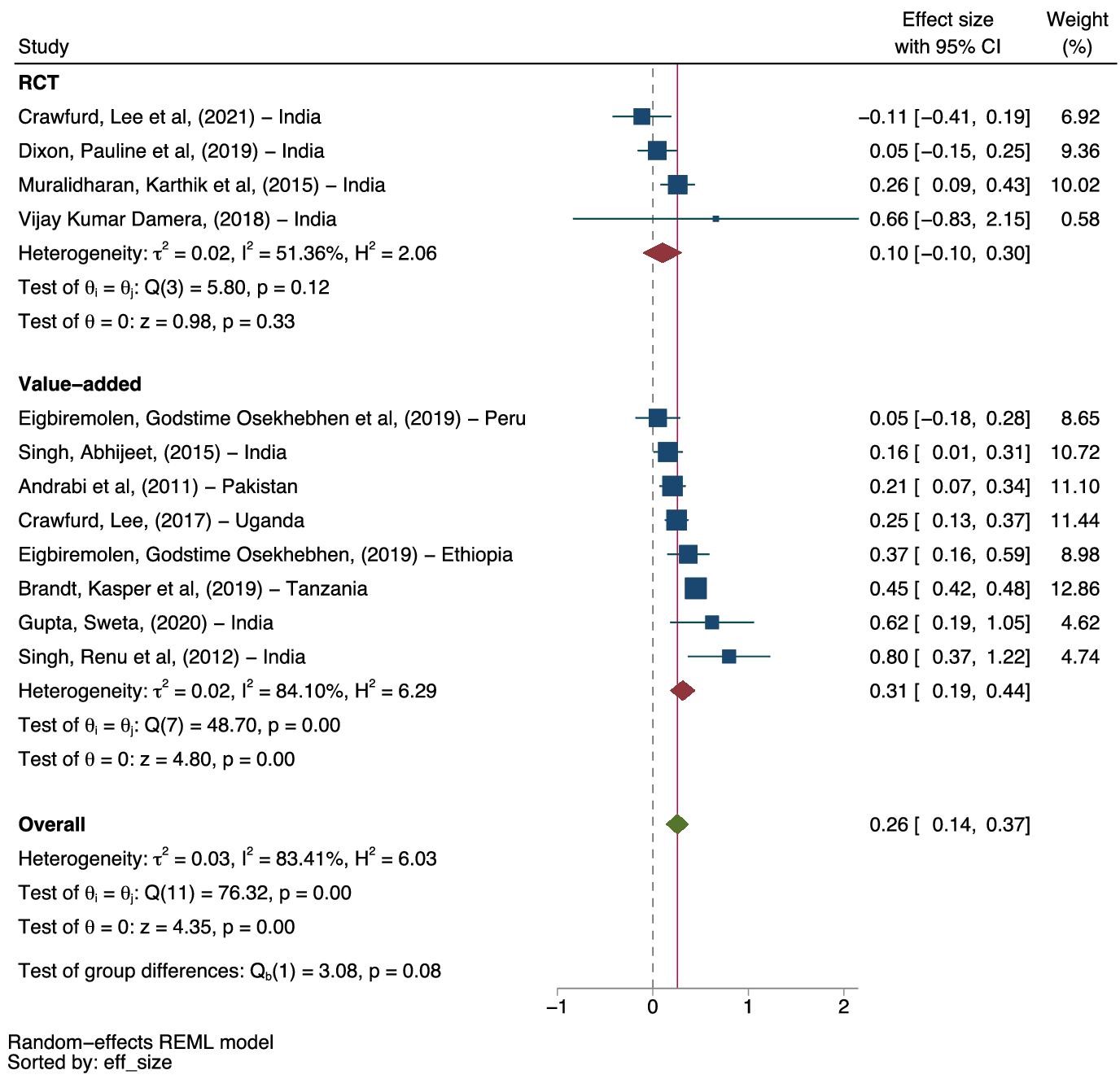Back in Dec 2021 we published a narrative systematic review of studies on private schools in low- and middle-income countries, where we concluded that any true value-add of private schools—once controlling for selection of wealthier or more-motivated students—is typically small.
At the suggestion of a journal reviewer, we have now added a formal meta-analysis of the impact of non-chain private schools to the paper. The updated paper was published this week at the World Bank Research Observer.
Figure 1. Meta-Analysis of Private School Effects on Learning

The meta-analysis finds a robust positive effect size of non-chain private schools —on average 0.26 standard deviations. Despite this, our conclusions haven’t dramatically changed for two reasons.
First, 0.26 standard deviations is a decent effect size for an intervention, but alone it’s nowhere near transformative for most children. One way to benchmark it is in terms of equivalent years of schooling. Attending a private school might be worth at best an additional year or two of schooling—not to be sniffed at, but not enough to help children achieve globally acceptable learning standards, or to achieve a comfortable standard of living as an adult. Private schools that are a bit better than very bad government schools can still be delivering poor quality teaching and learning. Kids deserve better.
Second, even if private schools can deliver better outcomes, the important policy question is so what? Should governments try to engage the private sector for publicly funded delivery of schools? Our review of public-private partnerships shows that whilst partnership schemes can help in quickly setting up new schools, there is scant evidence that they can reliably, sustainably and equitably improve quality at scale. Should private schools form chains to scale faster? Our review suggests that school chains don’t perform any better than individual private schools and have struggled to scale, often despite sizable external investment, and will likely remain peripheral to schooling systems. On the other hand, the non-chain sector is a sector that has already scaled, to reach millions of children, with limited financial or policy intervention.
But perhaps there are other reasons to choose private schools. For example, are they any safer? Two cross-country surveys (PISA-D and the violence against children surveys) allow us to compare rates of violence in private and government schools for ten countries. Here we find that children in public and private schools are exposed to similar (shockingly high) levels of violence—that is the share of children being physically beaten or sexually harassed by a teacher.
Of course, a limitation of this paper is our focus on learning outcomes in the definition of school effectiveness. The revealed preference of millions of parents for paid schools demonstrates that they gain enough value from private schools to justify the cost—and this may be partly due to other factors, such as shorter travel distances.
In short, on average, non-chain private schools deliver better learning outcomes than government schools, but their advantage has not translated to PPPs that deliver better education in the public sector. Our analysis also suggests that chains of private schools are unlikely to ever gain significant scale in most school systems, especially when compared with the already-scaled non-chain private school sector. Since the vast majority of children who attend private schools are not in school chains, we suggest that funding chains is not a good route to achieving quality at scale and donors should consider carefully how to engage more effectively with the non-chain sector.
CGD blog posts reflect the views of the authors, drawing on prior research and experience in their areas of expertise.
CGD is a nonpartisan, independent organization and does not take institutional positions.







